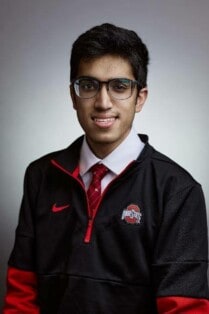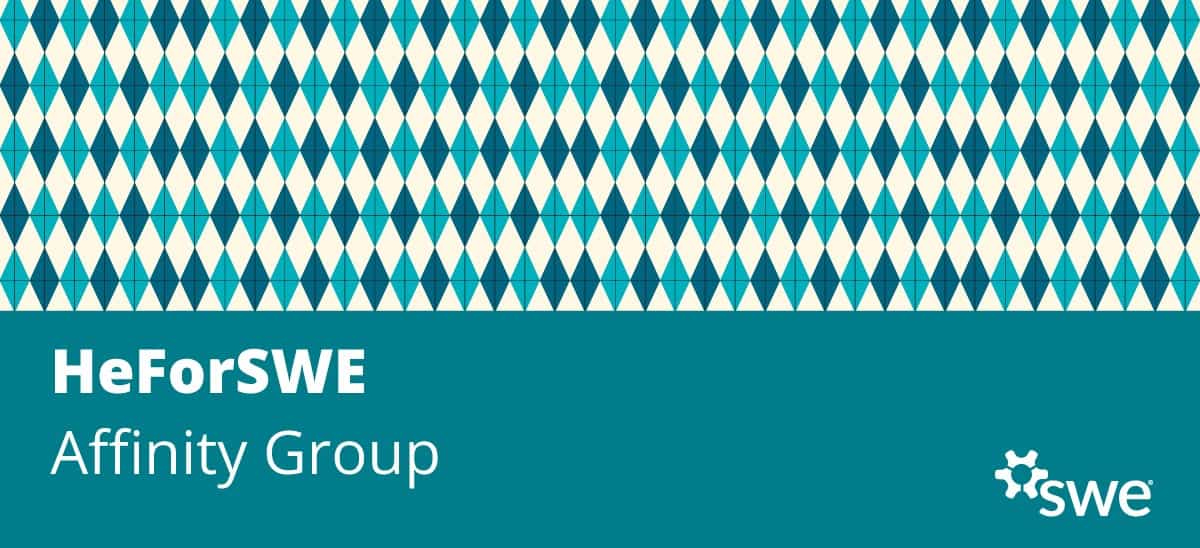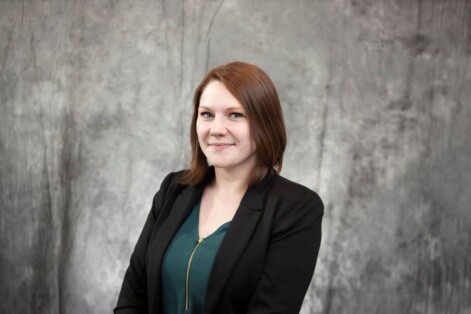As a part of the HeForSWE Affinity Group’s spotlight month, SWE highlights professionals and male allies, discussing their perspectives on allyship in STEM. In this article, we will feature Robbie Lake (he/him/his) and Sunny Saini (he/him/his).
Robbie Lake, Research and Development Engineer, Dodge Industrial, Inc.
 With over 20 years of experience in research and development engineering, Robbie has established a track record of excellence. His career began at Michelin, where he held various roles, contributing significantly to the company’s global growth. He transitioned to AVX Corporation as a finishing engineering manager, making high-level decisions and overseeing projects. Currently, Robbie is a research and development engineer at Dodge Industrial, Inc., based in Greenville County, S.C., where he continues to bring extensive experience to support the company’s R&D efforts. Throughout his career, he has excelled in project management, process optimization, and product development, consistently delivering results. He is also a dedicated advocate for diversity and inclusion in the workplace. Robbie’s journey reflects a passion for innovation, a commitment to excellence, and a drive for continuous learning.
With over 20 years of experience in research and development engineering, Robbie has established a track record of excellence. His career began at Michelin, where he held various roles, contributing significantly to the company’s global growth. He transitioned to AVX Corporation as a finishing engineering manager, making high-level decisions and overseeing projects. Currently, Robbie is a research and development engineer at Dodge Industrial, Inc., based in Greenville County, S.C., where he continues to bring extensive experience to support the company’s R&D efforts. Throughout his career, he has excelled in project management, process optimization, and product development, consistently delivering results. He is also a dedicated advocate for diversity and inclusion in the workplace. Robbie’s journey reflects a passion for innovation, a commitment to excellence, and a drive for continuous learning.
What Does Allyship Mean to You?
Allyship, to me, is a commitment to actively support and advocate for individuals or groups who face different challenges than you, even if you do not belong to that group yourself. It involves recognizing the privilege you may have and using that privilege to help those who are marginalized or disadvantaged.
There are many ways to do this:
- Listening and learning: Actively seeking to understand the experiences and perspectives of marginalized groups by listening to their stories, reading their literature, and educating yourself on the issues they face.
- Amplifying marginalized voices: Using your platform and influence to highlight and elevate the voices and perspectives of those who are often unheard or ignored.
- Advocating and taking action: Standing up against discrimination, injustice, or inequality when you witness it, and actively working to change policies and systems that perpetuate these issues.
- Supporting with resources: Offering financial or other forms of support to organizations, initiatives, or individuals working towards social justice and equity.
- Being an ally consistently: Allyship is not a one-time effort, but an ongoing commitment. It’s about being there for marginalized groups, even when it’s not convenient or popular.
- Recognizing your own biases and privileges: Acknowledging that we all have biases and areas of privilege and continually working to challenge and address them.
What Has Driven and Inspired You to Advocate, Support, and Become a Vocal Advocate for Women and Other Minorities in the STEM Field?
I am driven to advocate for women and minorities in STEM due to the systemic barriers they face. This inspiration often stems from my desire to promote diversity, equality, and innovation in the STEM field, as well as having a sister who is an engineer and a wife who is in medical technology. I try to encourage people to engage in opportunities for underrepresented groups, challenge stereotypes, and enhance the overall quality of research and technological advancements by tapping into a broader range of perspectives and talents. Such advocacy seeks to empower women and minorities to pursue STEM careers and contribute to a more inclusive and equitable future in these critical fields.
How Do You Cultivate Conversations in the Professional Environment About Diversity and Inclusion?
Cultivating conversations on diversity and inclusion in the professional environment involves promoting open dialogue, education, and awareness. Encourage employees to share their experiences and concerns, provide diversity training, support employee resource groups, and lead by example in demonstrating inclusive behavior. By creating a safe and respectful space for these conversations, organizations can foster a more diverse, equitable, and innovative workplace.
How Do You Engage Other Men to Become Advocates and Support These Initiatives?
Engaging other men as advocates for diversity and inclusion involves raising awareness of the benefits of such initiatives, addressing stereotypes and biases, and highlighting the shared responsibility for equality. Showcase male allies who actively support these initiatives and demonstrate how fostering an inclusive workplace benefits everyone. By creating a sense of shared responsibility and a supportive environment, more men can recognize the importance of advocacy and actively contribute to these initiatives.
What Advice Would You Recommend to Your Male Counterparts or Team Members on How to Be an Ally and Support the Inclusion of Women in Engineering Fields?
To support the inclusion of women in engineering fields, male counterparts should be focused on some of the following things. Actively listen to women’s experiences and challenges in the field. Educate themselves on gender bias and its impact. Promote and amplify the contributions and ideas of female colleagues. Give credit where it’s due. Mentor and sponsor women in their career development, providing guidance and opportunities for growth.
How Does Allyship and Inclusion Look in Different Companies or Business Segments? What Are Some Common Themes?
Allyship and inclusion can manifest differently across various companies and business segments, but common themes persist. In some companies, it often involves addressing the gender gap by promoting women in leadership and fostering a diverse workforce. In other industry settings, allyship might focus on overcoming historical inequalities. Companies in creative fields may emphasize embracing different perspectives for innovation. Common themes include leadership commitment to diversity, education and awareness programs, employee resource groups, mentorship, diverse hiring practices, and data-driven initiatives to measure progress. Adaptation to industry-specific challenges and acknowledging the intersectionality of identities are key. The overarching goal is to create a workplace where all employees, regardless of their background, feel valued and have equal opportunities to succeed.
Sunny Saini, Ohio State University Student and HeForSWE AG Chair for SWE’s OSU Section
 Sunny is a third-year student in electrical and computer engineering at The Ohio State University. As the HeForSWE AG chair, he seeks to promote allyship in all its forms within the OSU Section. Beyond SWE, Sunny is involved on campus as an undergraduate senator for the College of Engineering, vice president of events for the Buckeye Undergraduate Consulting Club, and a member of the University Conduct Board, as well as the Indian Students, Sikh Students, and Pakistani American Students Associations. He has interned at Rockwell Automation and Texas Instruments in technical sales, supporting Google Datacenter from the Santa Clara, Calif., office. Sunny is returning to Texas Instruments this summer to further explore his passion area. Outside school, he enjoys golfing, playing tennis, or trying new recipes.
Sunny is a third-year student in electrical and computer engineering at The Ohio State University. As the HeForSWE AG chair, he seeks to promote allyship in all its forms within the OSU Section. Beyond SWE, Sunny is involved on campus as an undergraduate senator for the College of Engineering, vice president of events for the Buckeye Undergraduate Consulting Club, and a member of the University Conduct Board, as well as the Indian Students, Sikh Students, and Pakistani American Students Associations. He has interned at Rockwell Automation and Texas Instruments in technical sales, supporting Google Datacenter from the Santa Clara, Calif., office. Sunny is returning to Texas Instruments this summer to further explore his passion area. Outside school, he enjoys golfing, playing tennis, or trying new recipes.
What Does Allyship Mean to You?
To me, allyship is intuitive; it means supporting those around you, regardless of their identity. However, institutions often fail to adhere to these principles. Therefore, I believe it is the duty of individuals with privilege to use it beneficially, to uplift voices and shed light on issues often overlooked.
What Has Driven and Inspired You to Advocate, Support, and Become a Vocal Advocate for Women and Other Minorities in the STEM Field?
The main driver of my advocacy has always been adversity. Stories of adversity from strong women and other minorities provided the anecdotal impetus for my drive toward advocacy. The stark statistics on systemic inequity are compelling. It was by listening and comparing others’ experiences, likely more adverse than mine, that I became determined to empower those around me.
How Do You Cultivate Conversations in the Collegiate Environment About Diversity and Inclusion?
Facilitating discussions on allyship and diversity, equity, and inclusion in a collegiate environment is challenging. I find that smaller, personal conversations, whether one-on-one or in groups, encourage openness. These settings foster a forum for attentive listening. Recognizing that such dialogues are grounded in trust and vulnerability, I often share that we are continually learning from one another. As someone striving to be an ally, I acknowledge my imperfections, understanding that being open to recognizing mistakes and willing to change our mindsets and actions is crucial for fostering an inclusive atmosphere conducive to innovation.
Don’t miss the latest news from the HeForSWE Affinity Group! Opt into the group email list by logging into your member portal and updating your Communication Preferences.
Author
-

SWE Blog provides up-to-date information and news about the Society and how our members are making a difference every day. You’ll find stories about SWE members, engineering, technology, and other STEM-related topics.






